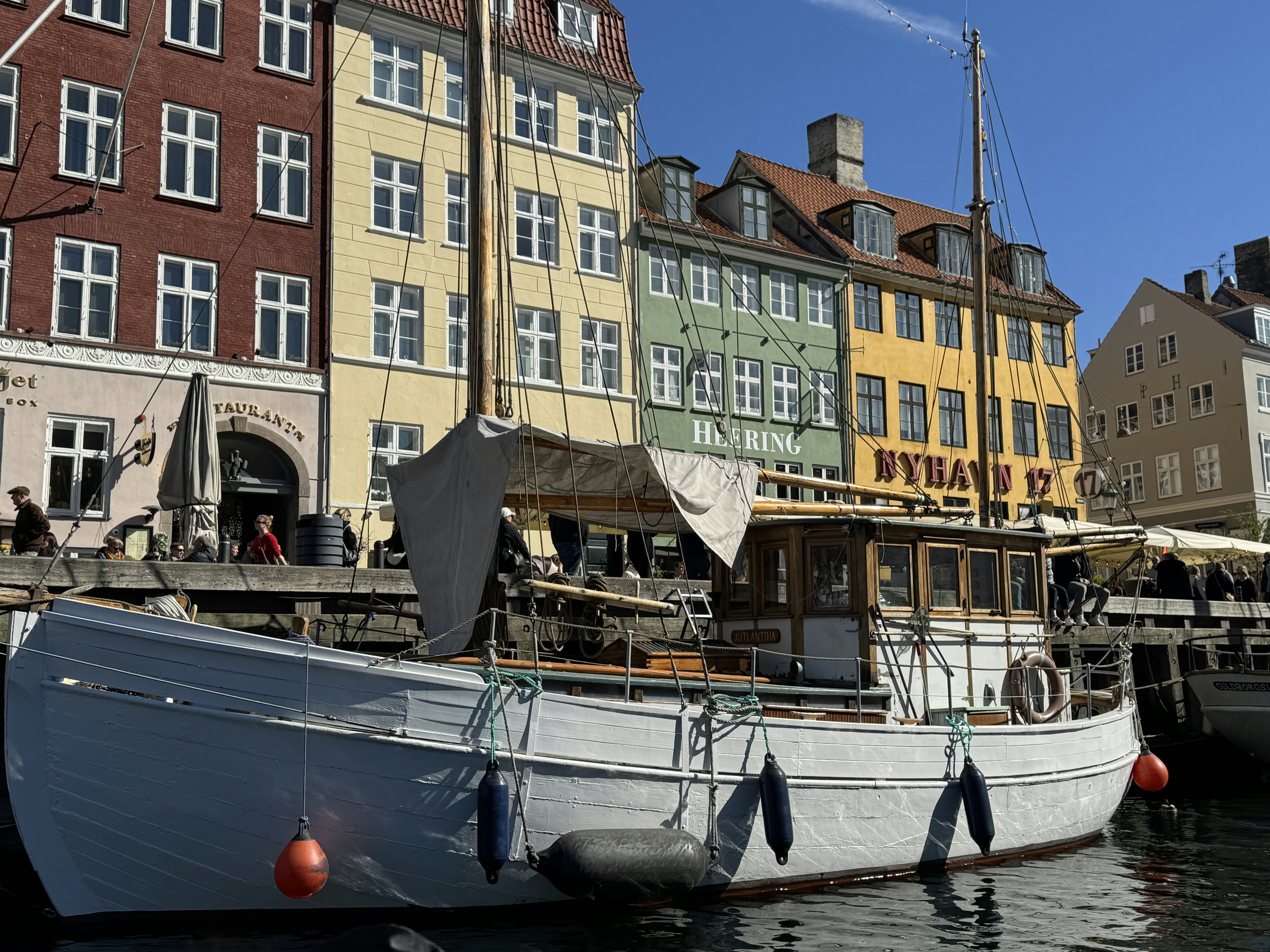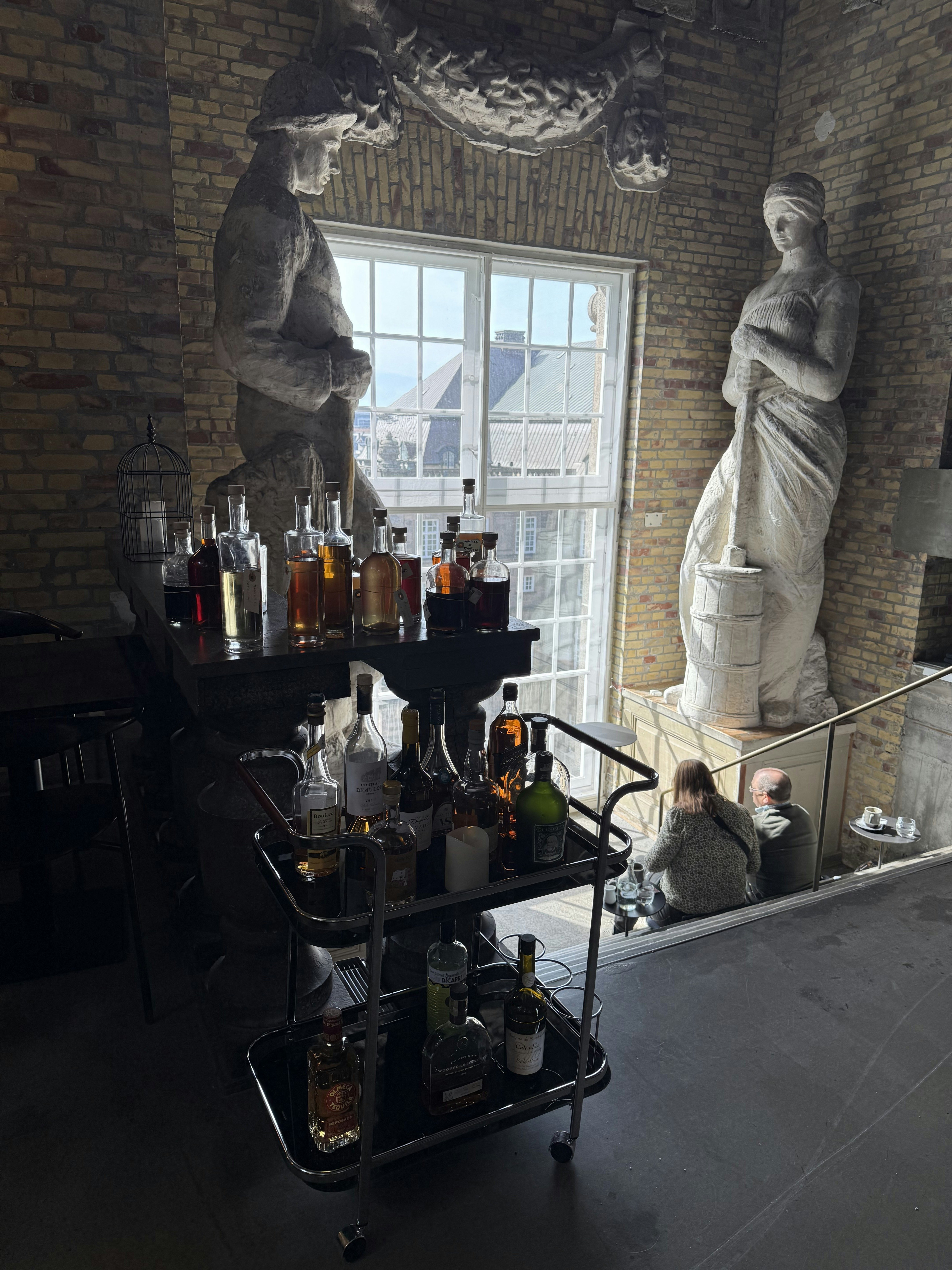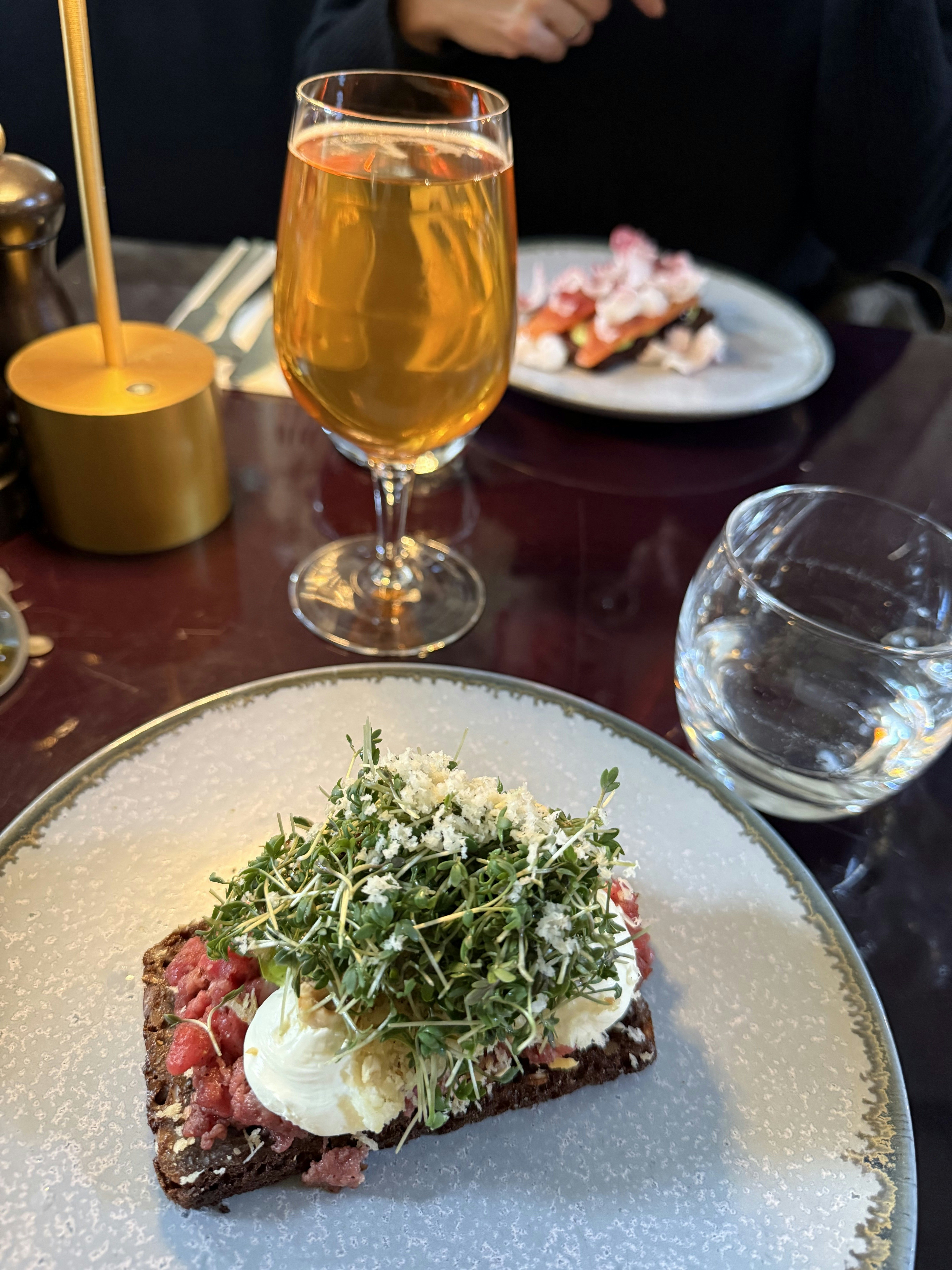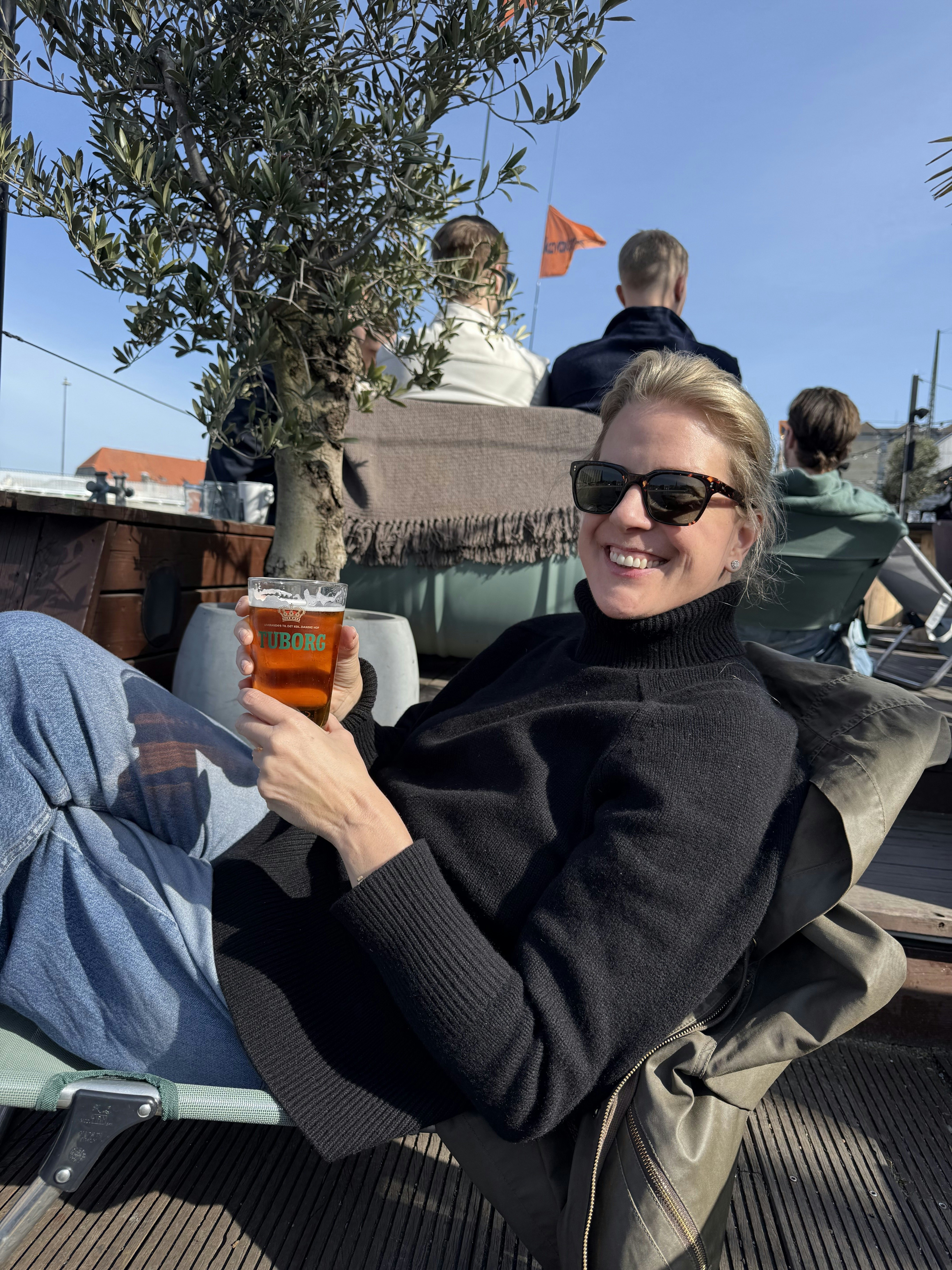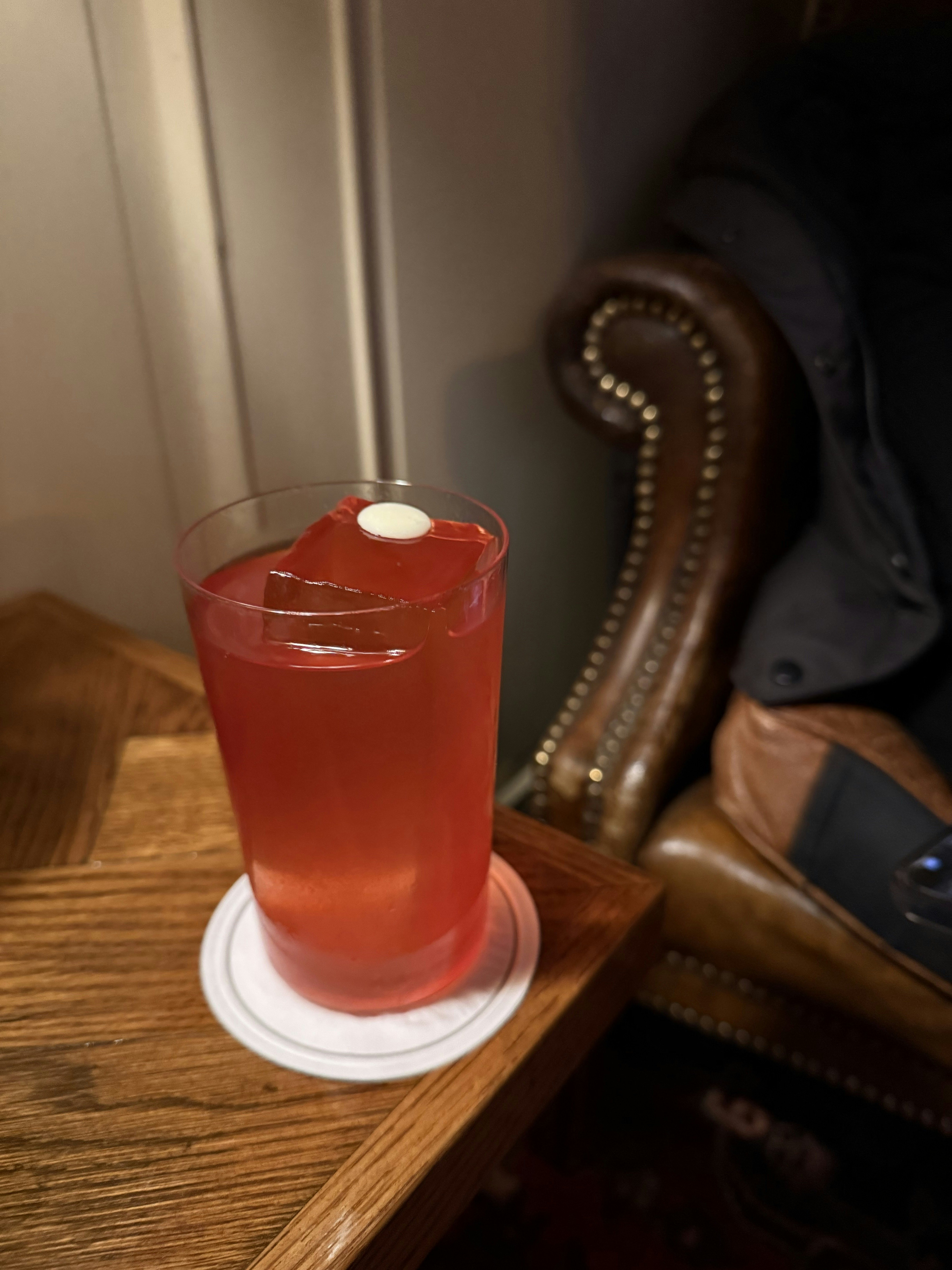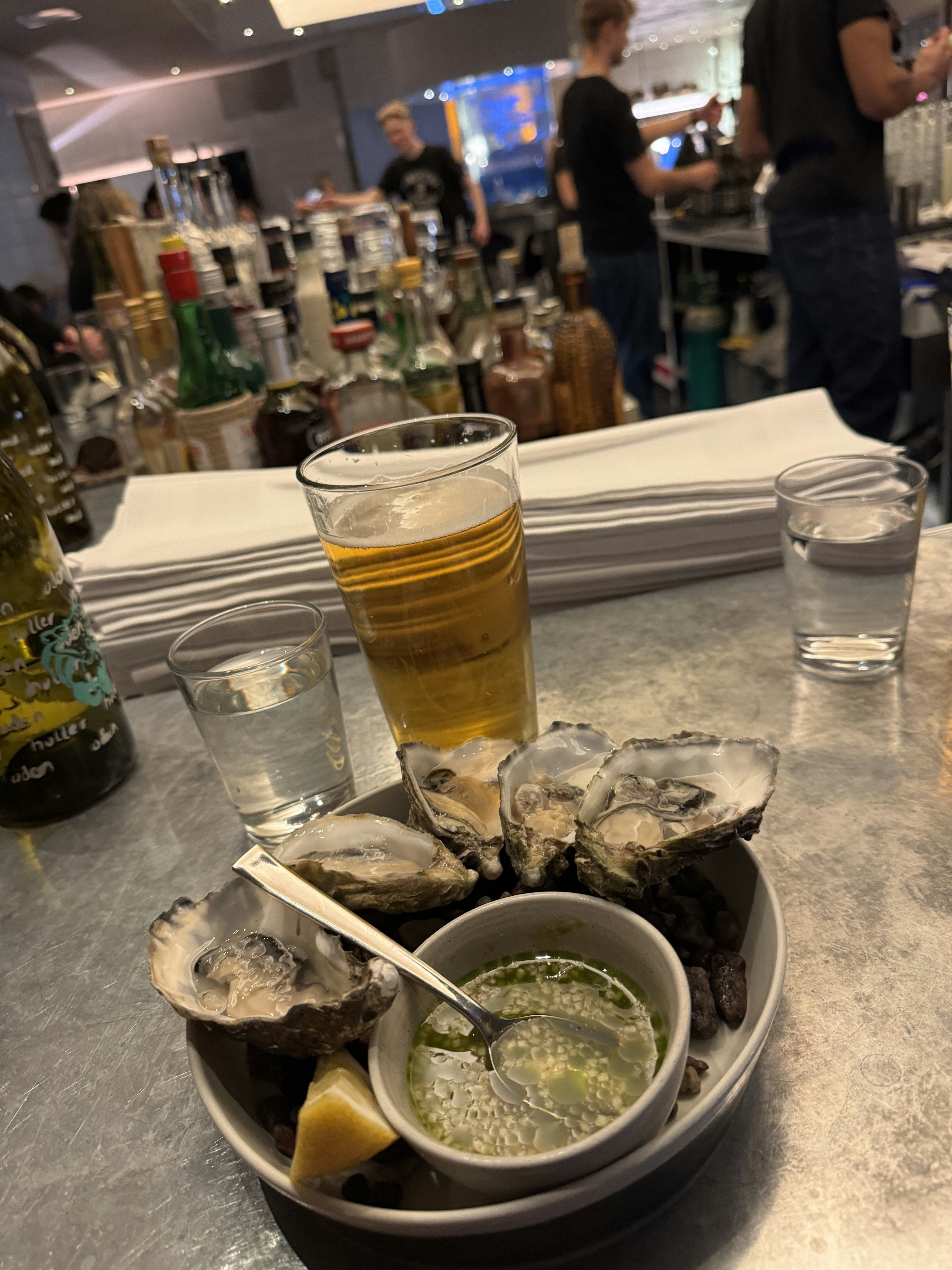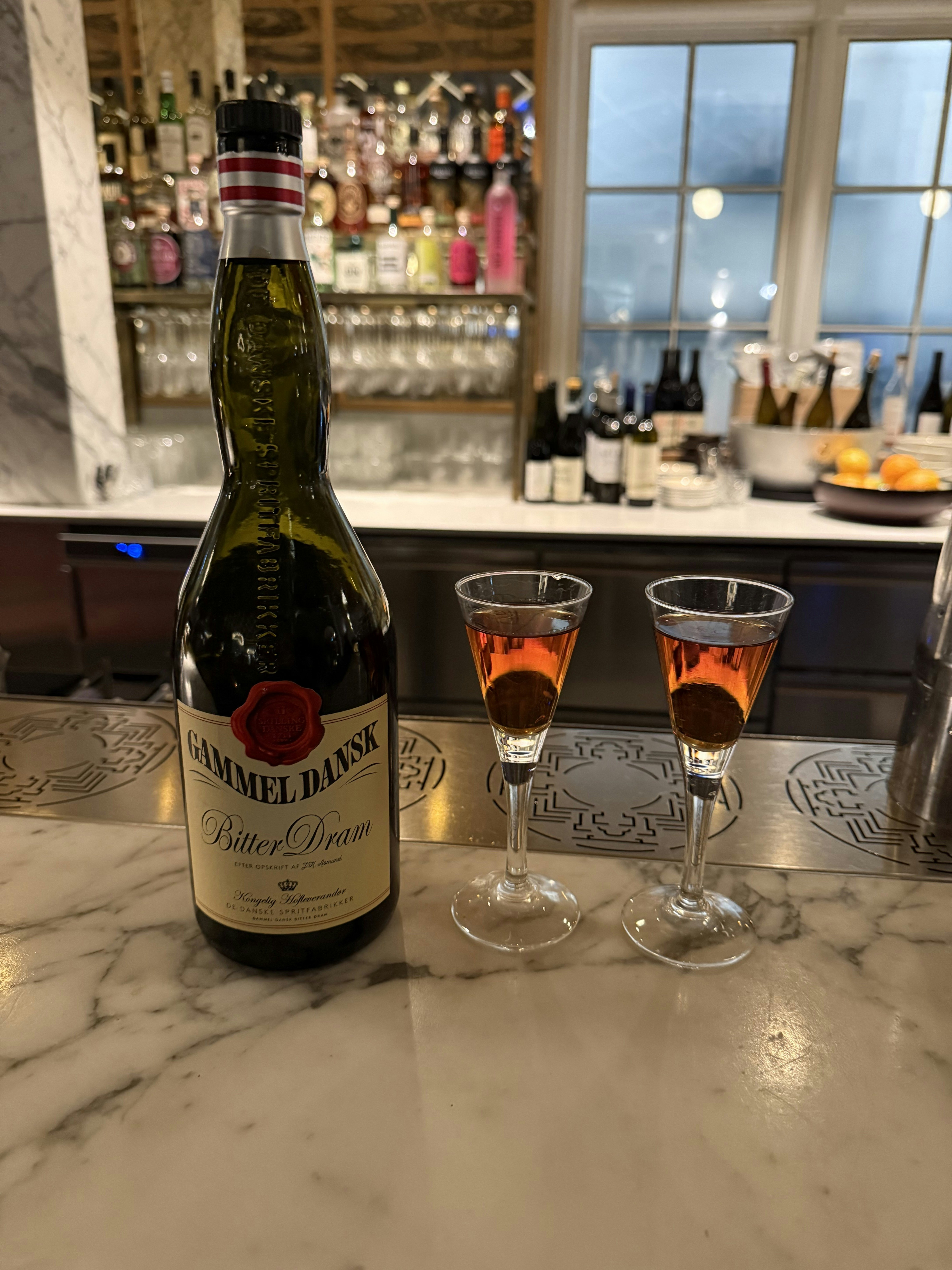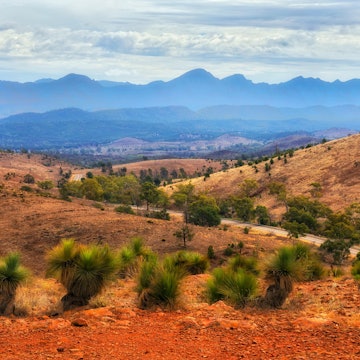
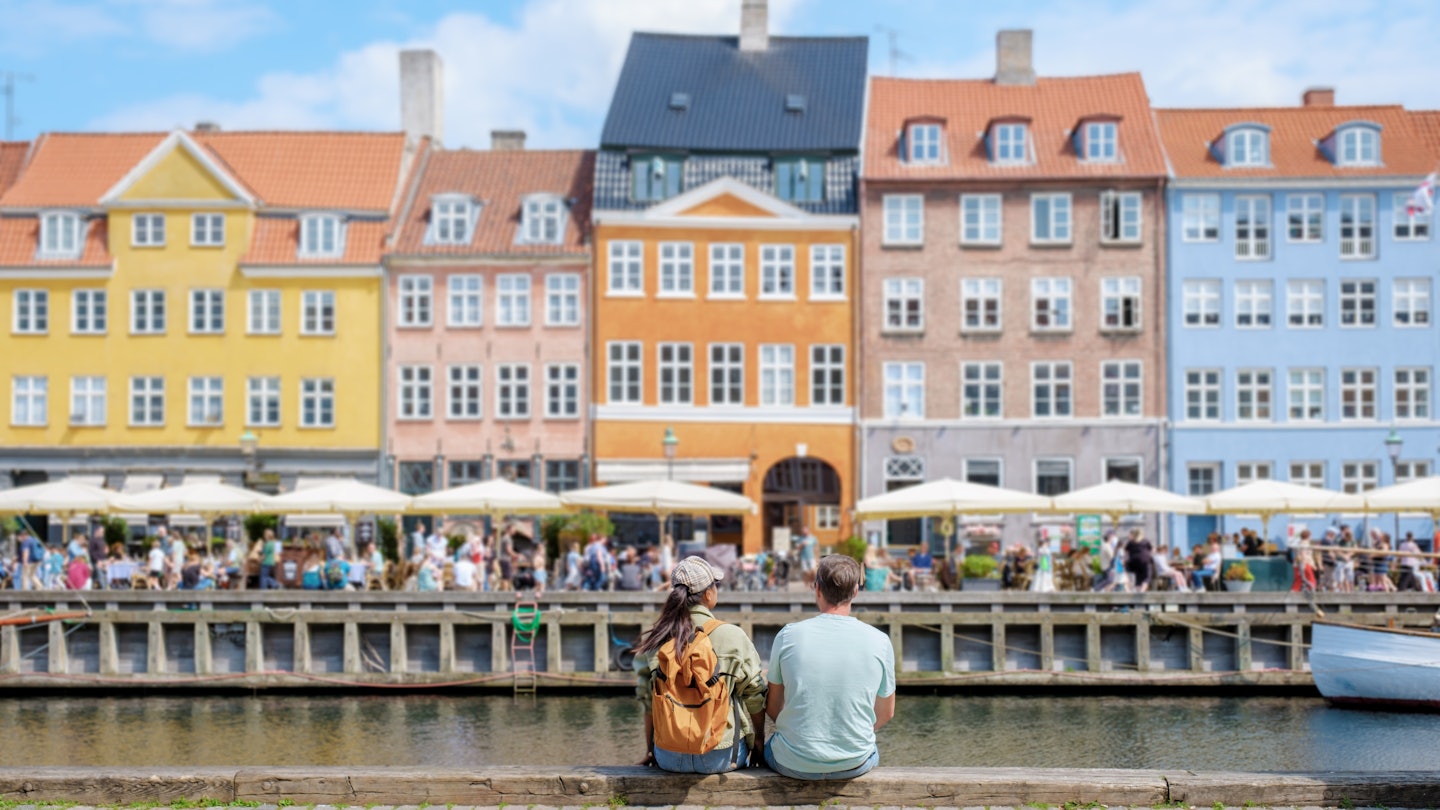
Copenhagen canals and color-blocked homes. fokke baarssen/shutterstock
Copenhagen is the type of city that makes you feel cool by default, as if its vibe transfers onto you by simply being there. CPH (yes it's the airport code, but that's what some people call it), Denmarkโs darling, dynamic and delightful capital, is known for its walkable and easy-to-traverse city core and gorgeous waterways, not to mention hip bars and restaurants, a focus on sustainability and historical architecture alongside modern, innovative designs.
I headed there for a long weekend that packed in the best the city has to offer plus plenty of time for chill canalside Carlsbergs, chance encounters and a maddening yet hilarious boat taxi adventure โ made even more memorable and meaningful by experiencing it all with my best friend. Tak, Jules!
Follow our three-day itinerary to make the most of your time in this breathtakingly beautiful city.
When to arrive: Arriving early on your first day gives you time to explore. We landed in Copenhagen at midday.
How to get from the airport: The S-train offers an easy and inexpensive 15-minute transfer from CPH to Copenhagen Central Station in Indre By (inner city). You can also take the Metro, which might require a transfer depending on where you're headed in the city.
Getting around town: Copenhagen begs to be explored by bicycle, but I was too afraid to try it (most people don't wear helmets!). Thankfully, public transport options abound and the city is walkable and easy to navigate.
Where to stay: When you alight the stairs from the train station, youโll arrive on the doorstep of , a surprisingly affordable luxury hotel with a rooftop pool and sauna housed within the former Central Post & Telegraph Head Office. Last year my colleagues stayed at and loved it.
What to pack: Layers, comfortable walking shoes and a few of your favorite outfits are all you need for your long weekend. Itโs a joy to dress smart and feel pulled-together as you explore this capital of Scandinavian chic, though casual attire is totally fine.
The canal in Nyhavn. Brekke Fletcher for ฬวะฤดซรฝ
Day 1
After checking into the hotel and cleaning up a bit, we walked straight to , home to Folketinget (the Danish parliament), where we had booked ahead to enjoy smรธrrebrรธd (open-faced sandwiches served on thin, dense rye bread with a variety of toppings) in the grandiose tower at . The beef tartare was outstanding, as was the smoked salmon. And you can't beat the city views from up high!
How to spend the day
We walked along the canals towards Nyhavn, stopping routinely to take in the architectural beauty, made even more stunning by bright sunlight and a backdrop of clear blue sky.
I spied , which I'd read about in ฬวะฤดซรฝ's own . Here you can rent a boat and learn to kayak or simply enjoy a beer or casual eats, like charcuterie or grilled seafood. Come summer, this place will be overrun with paddlers, but this was the first week of April so kayaking was not in the cards. Unable to resist floating on a wooden dock, though, Julie and I paused for a quick waterside Carlsberg.
After, we continued to wander towards Kongens Nytorve via Strรธget, one of Europe's longest pedestrian and car-free streets, before finally arriving to see the view we were searching for: colorful 17th century homes lining the main Nyhavn canal. Yes, this area is tourist-central, but itโs also so darn gorgeous you wonโt care.
Still full of smรธrrebrรธd, I said no to the delicious smelling and looking Danish hot dogs served by street vendors we kept passing. To get away from the bustle, we turned onto side street Lille Strandstrรฆde and happened upon a small downstairs speakeasy () helmed by a Swede named Jonas who welcomed us like regulars. We sat at a tiny table outside as, Bloody Mary in hand, he regaled us with tales of his travels and experiences with Hash House Harriers (whose motto is a drinking club with a running problem) and shared insider recommendations for other places to try.
Dinner
First things first: Copenhagen is a reservation town. Walking in is next to impossible, so make your plans in advance if you want to go somewhere specific and prepare to lay down a deposit when reserving.
We started with cocktails at . Housed in an historic townhouse in the inner city, this chic, beautifully designed bar offers specialty cocktails that border on art. We followed up our drinks with dinner at in an industrial Vesterbro warehouse with a large fish tank and a massive bar where we ate our meal. We ordered freshly baked bread with seaweed butter, oysters and fish and chips โ and of course , more Carlsbergs!
After dark
After such a filling (and late) dinner, we walked 15 minutes back to Villa Copenhagen and had one last nightcap in the form of a much-needed digestif, Gammel Dansk, in the spectacular hotel lobby before bed. This drink of alcoholic bitters tastes a little sweet and a little bitter, thanks to a collection of 29 herbs that includes angelica root, cinnamon and ginger. Do not pass up the opportunity to try it!




Day 2
Morning
Breakfast at the hotel was included in the rate, so we made the most of that smorgasbord of morning tasty delights: fresh pastries, smoked fish and meats, Danish rye bread, eggs, coffee, tea and fresh juices.
After breakfast, we headed to the rooftop pool and sauna area, which has plenty of outdoor seating with lounges, tables and couches. It was pretty crowded already โ probably because the day was cold but the 25-meter pool is heated and the sauna hot โ but we managed to find room to sit and soak up the sauna's health benefits. Staff serve food and drink up there, as well, making it a great place to stay for a while. But we had other things to do.
How to spend the day
After our time in the sauna, we changed clothes and headed out for a canal cruise. This highly recommended orienting experience is an absolute must for first-timers (and even second and third) because seeing the city from the water leaves you gobsmacked and lets you experience popular sites like the Opera House and the Little Mermaid statue from a different perspective. There are two main canal cruise operators, and we chose the hour-long cruise departing from Nyhavn. Next time, I want to try the company's smaller, only slightly more expensive Hygge tour, limited to 12 guests on an electric boat.
On the cruise, Julie and I made a mental list of the more eye-catching places we spotted and decided to prioritize visiting a few of them once we hit dry land. First was the or Royal Danish Library. This 19th century library occupies a red-brick building connecting its classical reading rooms, complete with handwritten card catalogs, with a jaw-dropping modern extension โ the โ that directly faces the canal. I couldnโt decide if the view was more breathtaking from inside the atrium or from our canal boat. From the water, the building's windowed edifice seemed to shimmer like, you guessed it, diamonds.
Next we walked over the pedestrian- and cyclist-only Inderhavnsbroen (Inner Harbor Bridge aka the โkissing bridgeโ) toward Christianshavn to find a charming waterside cafรฉ weโd spotted from the canal tour. (boat rental and cafรฉ) had just opened for the season four days prior.
I cannot recommend this place enough as a perfect perch to enjoy a drink or snack (order the giant bowl of potato chips) and watch boats roll by. As summer heats up, the cafรฉ adds live music to the menu and posts updates on their so visitors can book in advance.
Continuing on with our tour, we walked about 30 minutes to Refshaleรธen, a newly revitalized area that was once a depressing shipyard but is now dotted with chic houseboats and a rustic cafรฉ. Our goal: check out one of the area's top spots, โ a tiny but bustling cafรฉ and sauna that is a literal jumping off point for swimming in the summer months. Expect hip twenty-somethings dangling off the docks, a few picnic tables and a casual outdoor atmosphere.
Our next order of business was to take the yellow back to Indre By, but our navigation was not great: my phone had run out of juice and the dot that represented us on the map was inexact. Long story short, we got lost and couldn't find the boat. But the joy of getting lost meant we accidentally stumbled upon , an outdoor street food market constructed from old shipping containers. Diners are spoiled for choice here: momos from Nepal, smash burgers, gyro, Argentinian meats charred over open fire, Baobab, Chatpata and rรธdpรธlser, or Danish hot dogs, which are topped with a remoulade, crispy onions and pickled cucumbers. (Get extra napkins!)
So many minutes and missteps later, we finally made it to the Refshaleรธen harbor bus dock to catch our ride back to the hotel.
Cocktails and dinner
The fanciful is housed in the Nimb building and is a destination itself. Opened in 1909 in Tivoli Gardens, this architectural gem was designed to resemble a Moorish-style palace as a tribute to Arab culture. Its transports patrons to another world. The cocktail menu is a storybook, with each drink referencing a famous fairy tale. Even better, mixologists serve these cocktails in custom-made drinkware. Julie ordered the Philomela & Procne, a lemon verbenaโinfused gin cocktail served over a mound of crushed ice in a cracked-porcelain baby head with a golden spoon-straw.
Afterwards we were off to , a traditional Danish restaurant in Indre By that exudes 18th century charm with exposed wooden ceiling beams and intimate candlelit tables. One of the oldest restaurants in the city, Restaurant Puk has been operating since the mid-1700s, and that historic heft augments a palpably vital atmosphere. Its menu includes a variety of classic herring dishes, a selection of fresh fish entrees and โ the stand-out for meat eaters โ a filet of beef framed by pommes duchesse and red wine glazed shallots. In lieu of dessert we ordered another glass of Gammel Dansk. (It really is that good!)




Day 3
How to spend the day
We hit the ground running on our third (and last) day. Our goal was twofold: the morning at Tivoli Gardens followed by an afternoon at the Louisiana Museum of Art, a 45-minute S-train ride to Humlebรฆk station.
Opened in 1843, Tivoli Gardens is one of the most definitive experiences in a town full of them. The worldโs second-oldest amusement park, it feels like another world. While here, you might get the sense you're in Disneyland, which is no accident: Walt Disney cribbed so much of this magical place (ahem, magic kingdom) that it borders on plagiarism. The grounds are meticulously kept, with 60-plus restaurants and stalls in and around the gardens.
We rode a few of the rides, including the Flying Truck, a chilled-out, occasionally freaky journey through Hans Christian Andersen fairy tales and the inspiration behind Disneyโs โItโs a Small Worldโ ride. But the one that blew our minds โ and the mind of the tiny girl who sat behind us โ was Rutschebanan (the Rollercoaster), which whisks you around a mountain and through tunnels at speeds up to 60kph (37mph). Rides are unlimited, so we rode it five times and got a photo that totally encapsulated our trip. In the midst of my own blood-curdling screams, it hit me: I have not aged out of loving roller coasters. To cap it off we ate lunch at , ordering more smรธrrebrรธd and delicious house-made schnapps for dessert.
Once we'd had our fill, we crossed the street to Central Station and took the S-train to Louisiana. After a 15-minute walk from the train station, we were rewarded with one of the most extraordinarily beautiful views I've ever encountered. Seeing the Sound that separates Denmark and Sweden with a backdrop of the original museum and its modern extensions is quite simply breathtaking and something every person should experience at least once.
Highlights of the indoor museum were the trippy Gleaming Lights of the Souls by Yayoi Kusama and an arresting, site-specific work โ a diving board jutting through the glass window of the Panorama Room (Powerless Structures, Fig. 11 by Michael Elmgreen and Ingar Dragset). Allow extra time to lose yourself in the Danish design on display in Louisianaโs two-story gift shop and to explore the sculpture garden with its 50 works by artists Richard Serra, Henry Moore, Alexander Calder and many more. We were going to have a bite at the cafรฉ, but since the museum was closing, we didn't get to try it.
Evening
We were exhausted after our train ride back from the museum and wholly indecisive about what to eat, so we walked from the station to Fredericksburg to try , one of the cocktail bars that Jonas (our waiter friend from Day 1) recommended to us. Passionate staff served pre-batched cocktails in a modern Danish setting while a DJ spun records and we Shazamed every song. We sampled inventive takes on martinis, Manhattans and Negronis and had to stop ourselves from ordering more. We could see why this place was named one of the last year.
Our server suggested we walk back to Indre By by way of his favorite street: Vรฆrnedamsvej, also known as Little Paris. It was after 9pm on a quiet Sunday night, so most everything was closed, but a more strategic walk along this thoroughfare is definitely on my list for next time.
Day 4
In the few hours before heading to the airport, I hit a few more noteworthy sites that I recommend you add to your list:
store
A final meal of steak tartare and fries at , another Nimb Hotel spot, with its unobstructed view of Tivoli Gardens
And just like that, our Copenhagen fairy tale came to an end. I already can't wait for my next trip. The city has so much to explore, and Julie and I packed a lot into three days. You can, too!



